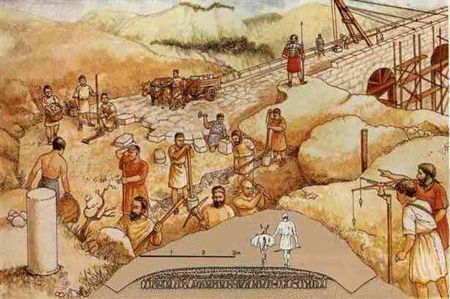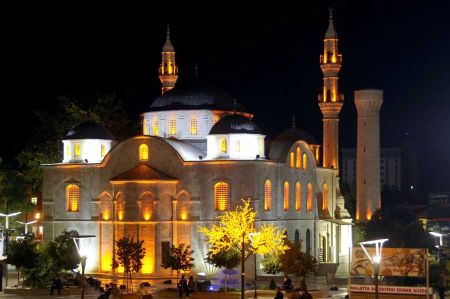Malatya - more background about the historical city
- Written by Portal Editor
Malatya already existed in Hittite times with a former places name when it was called Melid (today Arslantepe). After the fall of the great empire, it was ruled by the descendants of Kuzi-Teššup of Karkemiš, a grandson of Šuppiluliuma II, the last ruler of the Hittite empire.
The territory covered the plain from Malatya on the western bank of the Euphrates to Elbistan. It bordered Išuwa to the east. Assyrian campaigns under the rulership of Shalmaneser III. (844, 836, 835) occupied this territory. Around 800 BC the Assyrian Empire was besieged by Urartu. Under the rulership of Tukulti-apil-Ešarra III. the city was subject to tribute until Sargon II handed the city over to the king of Kummuh. Direct Assyrian rule was established following 708 BC , but it only lasted until 705. Campaigns against Melid are narrated under Sennacherib and Assurhaddon. Eventually old Melid was burned down by the Assyrians, but this is not really known. The remains are known today as Arslantepe. The city was later rebuilt elsewhere.
First Romans took Malatya - Seldjuks have taken over

After the death of the Danischmenden ruler Gümüştekin Danischmend Ghazi, the city fell to his younger son Sangur, who, however, could not stand against the Seljuk prince Kılıç Arslan I, who was able to conquer Melitene in the autumn of 1106. As a result of the death of Kılıç Arslan in 1107 and the imprisonment of his eldest son Malik Shah I, the city fell to the younger son Toghrul Arslan, his mother and her new husband, the Ortoqiden Balak ibn Bahram. In 1124 Balak died in battle and Melitene was recaptured by Emir Ghazi for the Danischmenden, to the delight of the local Christians, since Emir Ghazi was considered a mild and fair ruler.
When the Mongols invaded in 1243, many residents tried to flee to Syria but were captured by the Mongols. The Syrian metropolitan Dionysius managed to negotiate peace with the Mongols, the city was surrendered without being plundered. In 1273 the city suffered greatly from Arab attacks, and numerous residents of the surrounding villages were sold as slaves. In 1516 Malatya fell to the Ottomans. In the 19th century, the city grew and stepwise moved a few kilometres further.
Today's Malatya is the third city next to the ancient Melid or Arslantepe of the Hittites and the medieval Melitene with the name Malatya. Malatya from earlier times is now called Battalgazi and is also popularly called Old Malatya (Eskimalatya).
Arslantepe, also Arslan Tepe, the lions hill
The early copper production is of particular interest because the population at that time added arsenic to copper for the first time (arsenic bronze) and was thus able to manufacture the first swords. Since the Copper Age (4th millennium BC) Arslantepe has been continuously settled. The oldest excavated palace dates back to 3350 BC. Around 2900 BC. a city wall was built in the early Bronze Age.
A horizon of destruction marks the end of Arslantepe VI A. From the following Arslantepe VI B, both typical black and red ceramics and buildings with double rows of post holes point to the South Caucasian Kura-Araxes culture as conquerors. Excavations by L. Delaporte took place in the years from 1932 to 1939 and 1947 by Claude F. A. Schaeffer (unpublished). Italian archaeologists have been studying the Tepe since 1961. The Roman professor Marcella Frangipane took over the management in 1990 and is still working there today. Finds from Arslantepe were brought to the Museum of Anatolian Civilizations in Ankara until the 1970s, and later to the Malatya Archaeological Museum.
Persecution of the Armenian people
According to the Catholic Encyclopedia of 1913, the city of Malatya was populated by 30,000 people at the time, with a clear Turkish majority and an Armenian population of 3,000, of which 800 were Catholics. A more recent source, however, states that Malatya's population was around 40,000, of which half (20,000) were Armenians. As there have been five churches in the city, three belonged to the Armenians. The Armenians were in charge of trade, sericulture, silk trade and agriculture. In the spring of 1915, the city's Armenians were arrested by Ottoman authorities and sent to the Syrian Desert - death marches that culminated in the Armenian genocide. The survivors settled in different countries.
The surviving Armenians who fled to Armenia founded the Malatia-Sebastia district in Yerevan.
Refugee camp during the corona pandemic
In the course of the Syrian civil war, the Turkish government opened the borders for refugees to Greece in February and March 2020 after the breach of the EU-Turkey agreement. As a result, Greece closed its land borders with Turkey, so that the stranded refugees near the border set up a tent camp on Turkish territory. After the COVID-19 pandemic broke out in March 2020, a containerized refugee camp was built near Malatya, mainly accommodating those refugees who previously stayed in tents on the Turkish-Greek border.
Outdoor - beautiful parks and garden city in Norwich
Carolinensiel - a floating Christmas Tree in the harbour
